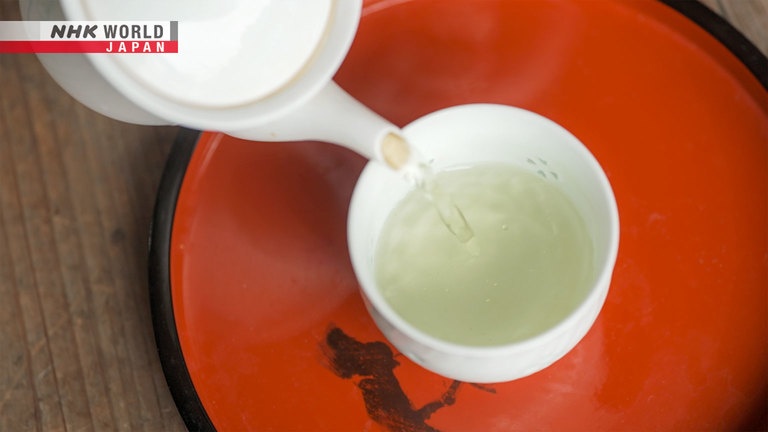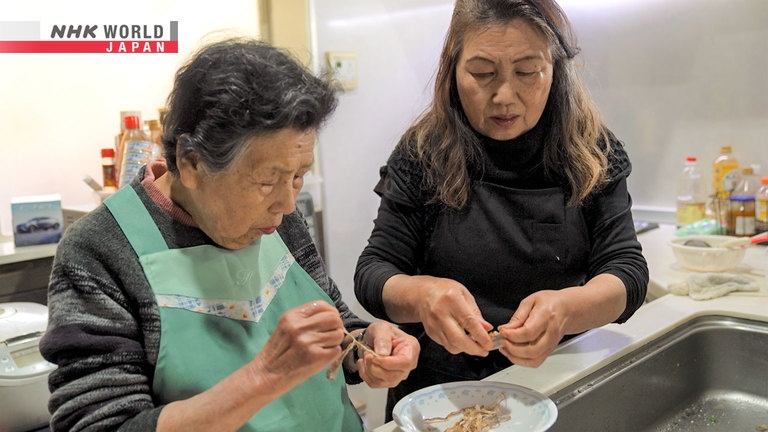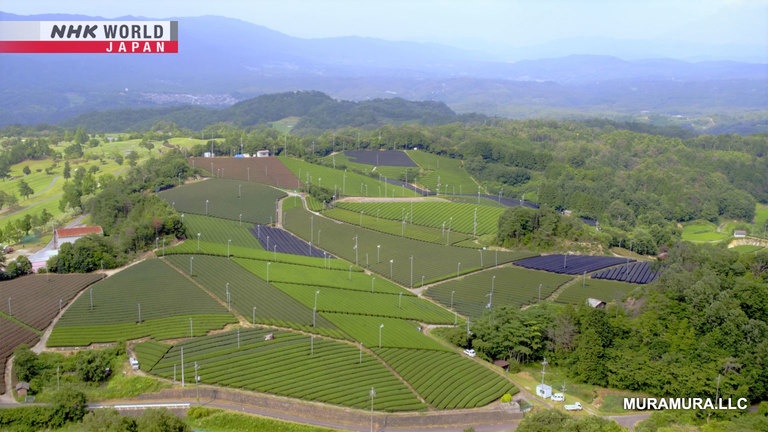Life on a Tea Farm
Much of Japan's renowned Uji tea is produced in Minamiyamashiro, the last remaining village in Kyoto Prefecture. Headed by women for the past three generations, the Nakanishi family has been harvesting tea in this remote mountain area for over 130 years. Today, even at the age of 90, Nakanishi Sachiko tends to the farm daily. Together with her daughter Chikayo, she finds time to make wonderful meals utilizing local produce.



Transcript
We're in a secluded mountain village in Kyoto Prefecture surrounded by tea plantations.
This woman makes a living by growing crops with her daughter all year round.
They have preserved the family tea farm and home in this area for over 100 years.
I'm 90, you know.
We have plenty of food
and water to get by.
Let's go through the kitchen window and follow their story.
Located deep in the mountains,
Minamiyamashiro and its population of around 2,500 is the last remaining village in Kyoto prefecture.
Tea plantations fan across the rolling hills.
The village has ardently maintained its Uji tea brand and farming traditions for over 170 years.
The first tea harvest comes when the season changes from spring to summer.
This is Nakanishi Sachiko.
She is 90 years old.
Her daughter Chikayo joins her for tea leaf picking.
We look for stems with two leaves.
We only pick these.
Starting in the morning, only the tips are harvested.
Newly sprouted tea leaves are delicate.
These leaves are immediately steamed and dried to prevent fermentation.
The result is highly aromatic, quality tea.
The house in which they live is a splendid structure built around 130 years ago.
This bag is full of green tea.
All our tea is homegrown.
We harvest a year's worth,
then share it with our relatives.
It's tea time.
The tea has a clear golden color and a refreshing taste.
Here's how we enjoy "sencha" green tea.
There's no set rule.
But tea with sweets is very good.
Maybe it's the balance
of bitterness and sweetness.
Mother loves her sweets!
Second from the right is Grandma Itoe.
I'm Sachiko.
I'm Chikayo, the third generation.
Without a male heir, the Nakanishi family farm has been run by three generations of women.
Following World War Two, Sachiko attended high school.
However, with no one to take over the family farm, she was obligated to leave school.
I missed school so much that
I cried while working in the fields.
It hurt when my teacher phoned
to invite me to a school event.
As the head of the household,
Sachiko worked on the tea and vegetable farm from morning to night.
Then, her daughter Chikayo was born.
She was always so busy.
I don't have many
memories of us together.
I recall her working all the time.
She was always out in the field.
I was brought up by Grandma.
I couldn't do much for my daughter.
As I had no choice but to be a farmer,
I just got on with it.
But Chikayo didn't take to the remote rural life and worked as an elementary school teacher.
It was embarrassing having grown
up in the middle of nowhere.
I didn't like the image of "village."
But I was always welcomed
when coming back to visit.
I liked the warmth I received.
I feel that living in the country...
Well, I feel fortunate.
The large slope in front of the house is utilized for farming.
Even at the age of 90, Sachiko has worked on her farm daily since she took over.
I bury the weeds in the ground.
It makes good fertilizer.
But decomposition attracts bugs.
I get rid of them every morning.
So many bugs.
The vegetables are grown pesticide-free.
This is canola.
It is a popular produce of Kyoto.
You boil it briefly.
Then mix in mustard and soy sauce.
In the area below, long green onions are grown.
It was only recently that they finally had time to be in the kitchen and cook together.
Using soybeans harvested last fall, they are making soy "namban," a Nakanishi family specialty.
She first deep-fries the beans.
Soybeans can grow nearly anywhere
without much fertilizer.
It's a good source of protein.
This is why we eat lots of it.
The key ingredient is dried squid.
Torn into strips, the squid is marinated with soybeans in a salty-sweet "namban" sauce.
Shopping has become much easier
since we have a car now.
It was quite a task in the old days.
We had to pull a large cart
over the hill to get to the town.
The villagers residing in this area have always cooked preservable food utilizing dried fish and soybeans,
which makes for a somewhat strong flavor.
Using tofu made from soybeans, the next dish is "kaminari" rice.
"Kaminari" means thunder in Japanese.
The tofu is sauteed in broth and soy sauce.
Can you hear it roaring?
I imagine this is how it got its name.
Why else would it be called "kaminari?"
The tofu mix is cooked with rice.
Before refrigerators, this was a way to use the leftover tofu.
Two minutes before finishing,
add the green onion.
This keeps the color vibrant.
Plenty of freshly picked green onions are added just before the rice is ready.
This is the Nakanishi family's home cooking.
The recipe has been passed down from Sachiko to Chikayo.
Soy "namban" is Sachiko's specialty.
Canola, the wild mountain plant "warabi," and bamboo shoots are also obtained nearby.
Bless our food.
She always seems
to eat more than I do.
I'm no good at most things,
but I'm an eating expert.
I've never bought supermarket vegetables.
This is normal for me.
Thank you for the food.
In 2017, a store selling local specialties opened in the village of Minamiyamashiro.
The store is lined with local tea and fresh vegetables from the area.
These are vegetables from Sachiko's farm.
She is happy to share her produce with others.
There's another thing Sachiko is happy about.
This is my son.
Chikayo's son, Daisuke, used to work in an urban area but returned to the village when the store opened.
I'm still young and wasn't planning on
moving back here so soon.
The store opened at a good time.
I'm glad my son lives close by.
Daisuke is the Nakanishi family's first male heir in a hundred years.
Everyone is thrilled that he's come back to the village.
On top of that...
This is Risa, my wife.
Daisuke married his co-worker at the store.
The couple is blessed with two children.
Thank you for waiting.
This is our green tea lunch set.
Here is Grandmother's soy "namban."
The food offered here is cooked by the locals using produce from the area.
Sachiko's soy "namban" is included in the lunch set.
I've never had anything
like this before.
The taste is comforting.
The soybeans are very flavorful.
It's very good.
This store connects the Nakanishi family through the generations
and also brings Sachiko's culinary wisdom beyond the family table.
There's a chestnut tree close by.
We can also get kiwi fruit and persimmon.
We have plenty of food and water.
We can get by.
Come what may,
we've enough to live on.
I'm grateful to have been
born and live my life here.